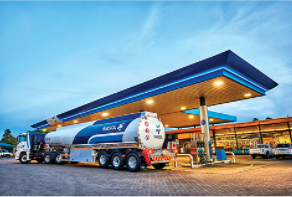|
Total Stores
|
Division
|
Store Location
|
Address
|
Tel No
|
|
1
|
Relabelled
|
Salt River
|
29 Brickfield Road, Salt River, Cape Town
|
(021)4479913
|
|
2
|
Relabelled
|
Bellville
|
Shop 4, Corner Voortrekker Rd & Durban RD, Bellville
|
(021)9171860
|
|
3
|
Relabelled
|
Kenilworth
|
Unit number 3 access park, Chichester road, Kenilworth
|
(021)6714778,
|
|
4
|
Relabelled
|
Kuilsrivier
|
Shop 4 & 5 Access Park, Kuilsrivier
|
(021)9031294 061 287 3980
|
|
5
|
Relabelled
|
Mobeni
|
Cnr Grimsby & Leicester Rd, Mobeni, Durban
|
(031)4620540 W\House (031) 469 9409
|
|
6
|
Relabelled
|
Pier 14
|
21A Pier 14, Shopping Centre, Port Elizabeth
|
(041)4841575 083 5176 728
|
|
7
|
Relabelled
|
Marlboro
|
13 Sparten Crescent ,Marlboro , Ext 3 Johannesburg
|
(011) 262 0460
|
|
8
|
Relabelled
|
Soweto
|
Maponya Shop 200 2127 Chris hani Road, klipspruit ext5 Soweto
|
(011) 933 1023
|
|
9
|
Relabelled
|
Umlazi
|
Shop 155 Umlazi Mega City 50 Griffiths Mxenge Highway Umlazi
|
(031) 902 1325
|
|
10
|
Relabelled
|
Epping
|
10 Losack avenue , epping industrial
|
(021) 534 0401
|
|
1
|
BCWC
|
Kloof
|
Lifes on Kloof, 50 Kloof Street, Gardens ,Cape Town, shop G-15
|
(021) 422 1593 078 211 8051
|
|
2
|
BCWC
|
Canal Walk
|
Shop 619 Canal Walk , Century BLVD, Century City , Cape Town 7441
|
(021) 551 2891
|
|
3
|
BCWC
|
Monte Casino
|
Shop 80B Montecasino, No1 Monticasino Bouelvard Fourways , 2191 Magents
|
(011) 465 0438
|
|
4
|
BCWC
|
Menlyn
|
Shop UF 42 & 43 cnr atterbury road & lois avenue , menlo park , Pretoria
|
(012) 764 9600
|
|
5
|
BCWC
|
Balito
|
SHOP 608 LEONORA DRIVE,DOLPHIN COAST,BALLITO,4399
|
032 586 0242
|
|
6
|
BCWC
|
Rosebank
|
Shop GF08, The Zone, Rosebank mall, Oxford Street, Johannesburg
|
(011)268 1114
|
|
1
|
Magents
|
Canal Walk
|
Shop 08 , Century Blvd , Century City 7441
|
(021) 551 2533 JP CELL: 064 686 4026
|
|
2
|
Magents
|
Monte Casino
|
Shop 21 Montecasino, No1 Monticasino Bouelvard Fourways , 2191 Magents
|
(011) 465 6721 074 669 6310 073 804 4352 079 884 7607
|
|
3
|
Magents
|
Menlyn
|
MENLYN MALL , SHOP G190 CNR ATTERBURY ROAD & LOIS AVENUE,MENLO PARK,PRETORIA
|
(012) 348 4725 073 8677 468 - Sieya , kiley , OUPA, Micheal
|
|
4
|
Magents
|
Balito
|
SHOP 608 LEONORA DRIVE,DOLPHIN COAST,BALLITO,4399
|
061 521 7446 032 586 1467
|
|
1
|
WSA
|
Menlyn
|
MENLYN MALL ,LF41A CNR ATTERBURY ROAD & LOIS AVENUE,MENLO PARK,PRETORIA
|
Vicky - 078 816 1921 land line - 012 348 4766
|
|
6
|
BCWC
|
Rosebank
|
Shop GF08, The Zone, Rosebank mall, Oxford Street, Johannesburg
|
(011)268 1114
|
|
1
|
Magents
|
Canal Walk
|
Shop 08 , Century Blvd , Century City 7441
|
(021) 551 2533 JP CELL: 064 686 4026
|
|
2
|
Magents
|
Monte Casino
|
Shop 21 Montecasino, No1 Monticasino Bouelvard Fourways , 2191 Magents
|
(011) 465 6721 074 669 6310 073 804 4352 079 884 7607
|
|
3
|
Magents
|
Menlyn
|
MENLYN MALL , SHOP G190 CNR ATTERBURY ROAD & LOIS AVENUE,MENLO PARK,PRETORIA
|
(012) 348 4725 073 8677 468 - Sieya , kiley , OUPA, Micheal
|
|
4
|
Magents
|
Balito
|
SHOP 608 LEONORA DRIVE,DOLPHIN COAST,BALLITO,4399
|
061 521 7446 032 586 1467
|
|
1
|
WSA
|
Menlyn
|
MENLYN MALL ,LF41A CNR ATTERBURY ROAD & LOIS AVENUE,MENLO PARK,PRETORIA
|
Vicky - 078 816 1921 land line - 012 348 4766
|


